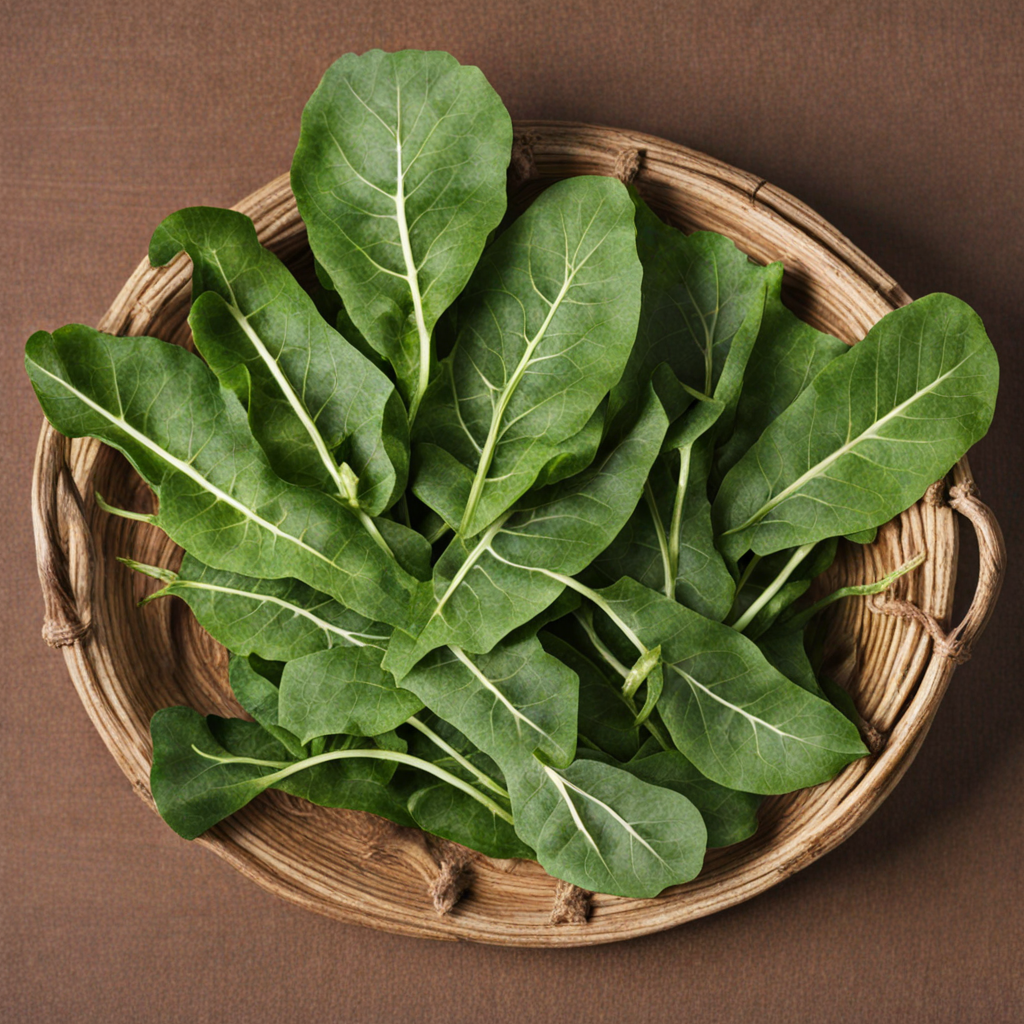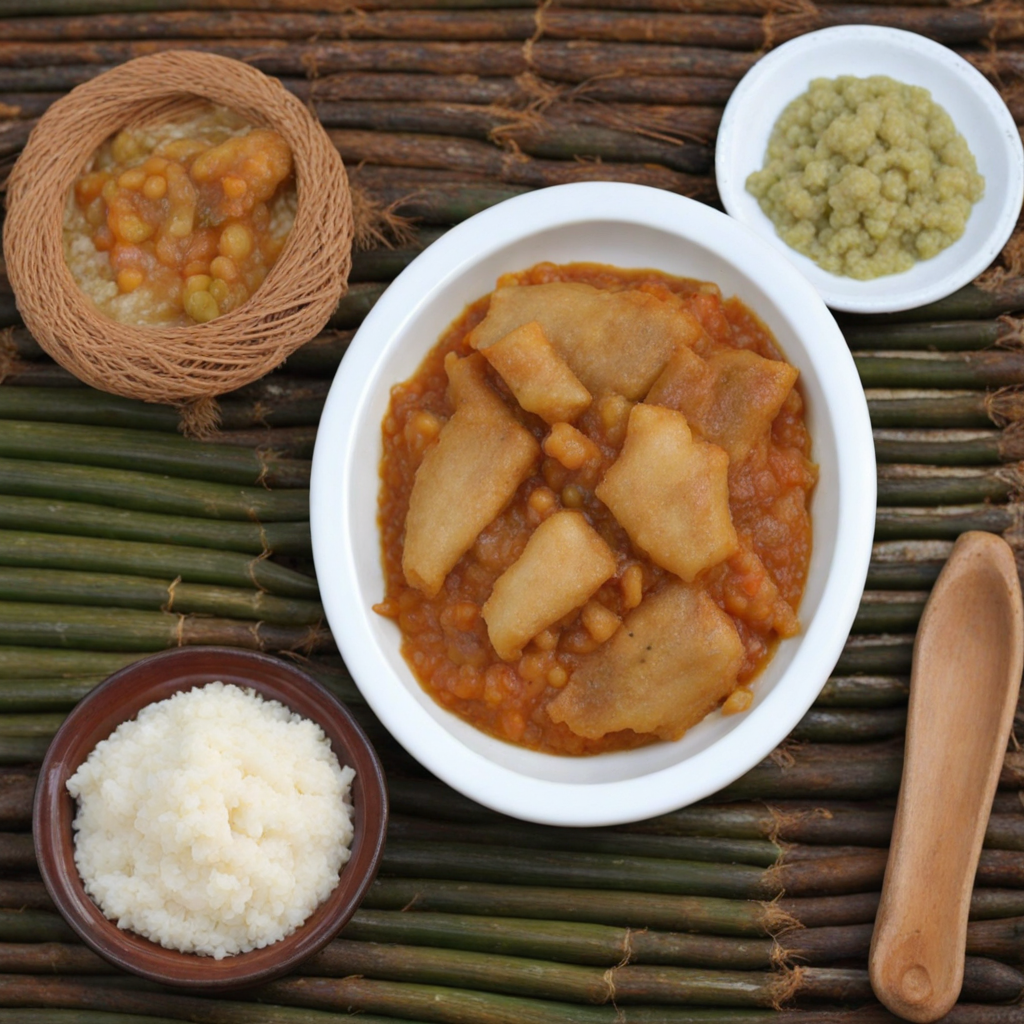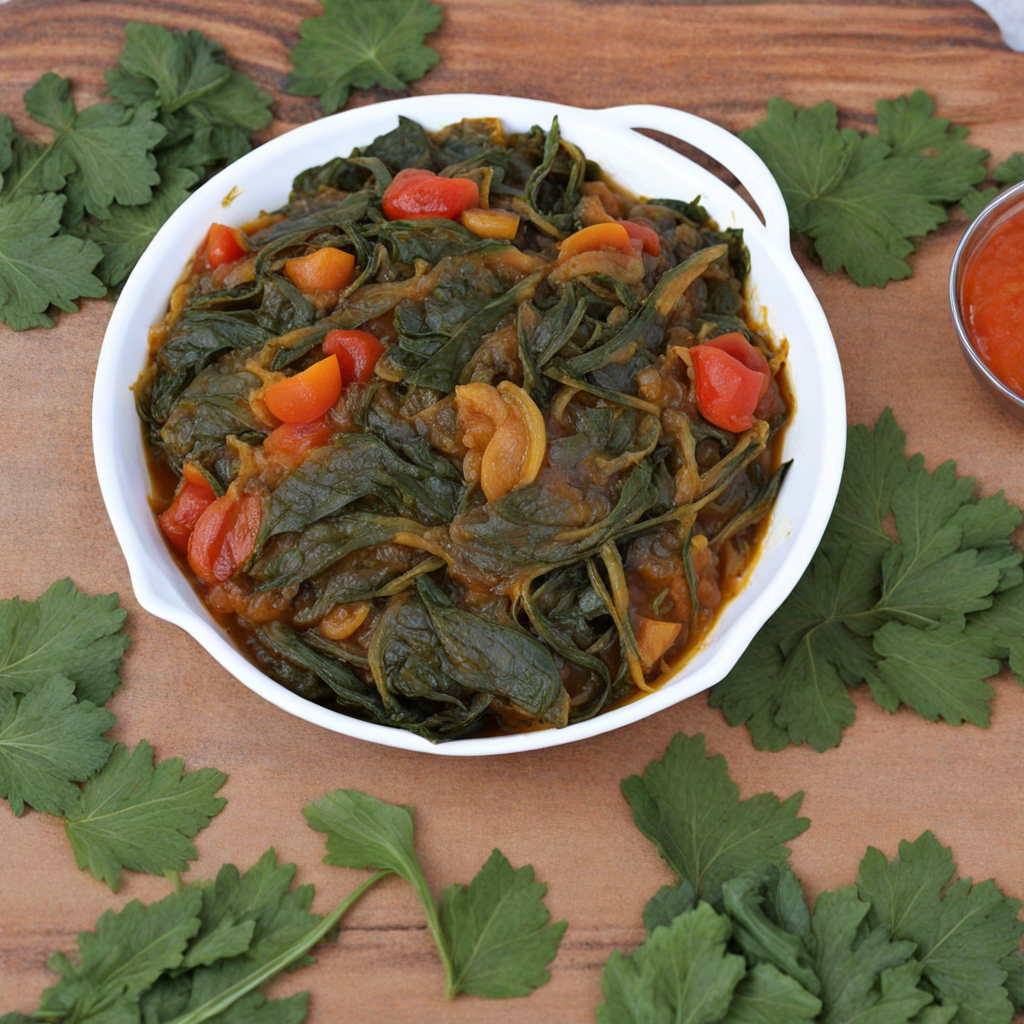Sweet Potato Leaves
Sweet potato leaves, a staple in Zambian cuisine, offer a unique and hearty flavor that captivates the palate. These vibrant green leaves are often harvested from the sweet potato plant and are celebrated for their nutritional value, packed with vitamins A and C, calcium, and iron. When cooked, they have a slightly earthy taste that is complemented by their tender texture, making them an excellent addition to a variety of dishes. The leaves are typically sautéed or steamed, allowing their natural flavors to shine while softening their fibrous structure. In Zambia, sweet potato leaves are often incorporated into traditional dishes, such as 'nshima,' a thick maize porridge that serves as a staple accompaniment. They can also be used in stews, where they absorb the rich flavors of meats and spices, creating a comforting and satisfying meal. The leaves can be seasoned with local spices, tomatoes, and onions, enhancing their inherent taste and providing a delicious contrast to the dish's other components. Their versatility allows them to be enjoyed in both simple and elaborate preparations, catering to various culinary preferences. Beyond their delightful taste, sweet potato leaves also carry cultural significance in Zambia, often representing sustenance and community. They are commonly found in local markets and kitchens, reflecting the country’s agricultural heritage and the importance of homegrown ingredients. As more food enthusiasts explore global flavors, sweet potato leaves offer an exciting opportunity to discover a delicious and nutritious green that embodies the essence of Zambian cooking.
How It Became This Dish
The History of Ipwa: Zambian Delicacy Rooted in Tradition #### Origins of Ipwa Ipwa, often referred to as “dried fish,” has its roots deeply embedded in the rich tapestry of Zambian culture. This traditional food is primarily made from small fish, most commonly the Kapenta (Limnothrissa miodon), which is found in the vast waters of Lake Tanganyika and Lake Kariba. The practice of drying fish has been an essential part of Zambian cuisine for centuries, with its origins traceable to the early communities living along these waterways. The significance of fish in the Zambian diet cannot be overstated; it has been a vital source of protein for many communities, especially those residing in rural areas where livestock farming might be less feasible. The drying process, which involves salting and sun-drying the fish, is a time-honored method that not only preserves the catch but also enhances its flavor. This technique reflects the ingenuity of Zambian communities, who have historically adapted their culinary practices to the resources available in their natural environment. #### Cultural Significance Ipwa holds a special place in Zambian culture, transcending mere sustenance to become a symbol of community and heritage. The preparation and consumption of Ipwa are often communal activities, bringing families and friends together, particularly during festive occasions or gatherings. In many Zambian households, Ipwa is not only part of the daily diet but also a dish that features prominently during celebrations, such as weddings and traditional ceremonies. The dish is more than just food; it embodies the values of sharing and hospitality that are integral to Zambian culture. It is often served with staple foods such as nshima (a thick porridge made from maize) and vegetables, creating a balanced meal that nourishes both body and spirit. In this way, Ipwa serves as a culinary bridge, connecting generations and fostering social bonds. #### Development Over Time As Zambia has transitioned through various historical phases—from pre-colonial times to independence in 1964—the role and preparation of Ipwa have evolved, yet its core significance has remained intact. In the pre-colonial era, fishing was primarily a subsistence activity, with families relying on the local waters for their daily needs. The drying of fish was a practical solution for ensuring a steady food supply, particularly during the lean seasons when fresh fish was scarce. With the advent of colonial rule, the dynamics of fishing and food production changed. Colonial policies often disrupted traditional fishing practices, leading to shifts in how communities engaged with their natural resources. However, many Zambians adapted by continuing to prioritize traditional methods of food preservation, including the drying of fish. Post-independence, the government recognized the importance of fisheries for economic development and food security. Initiatives were introduced to promote sustainable fishing practices, which included education on the importance of preserving the fish populations in Zambian waters. Consequently, the popularity of Ipwa grew, not only as a staple food but also as a source of income for many families involved in fishing and fish processing. As the global food landscape began to change in the late 20th century, Ipwa found its way beyond the borders of Zambia. The increasing diaspora of Zambian communities around the world has led to a growing appreciation for traditional dishes like Ipwa among Zambians living abroad, as well as among other communities curious about African cuisine. This globalization of taste has encouraged a revival of interest in traditional foods, sparking culinary innovation while still honoring the time-honored practices of preparation. #### Contemporary Context In contemporary Zambia, Ipwa continues to thrive as both a beloved dish and a commercial product. Markets across the country are filled with stalls selling dried fish, reflecting its enduring demand among consumers. The rise of urbanization has also led to an increased appreciation for traditional foods, with younger generations seeking to reconnect with their culinary heritage. Moreover, the Zambian government and various NGOs have initiated programs aimed at promoting sustainable fishing practices, ensuring that traditional dishes like Ipwa can be enjoyed by future generations. Such efforts involve community education on responsible fishing and the importance of maintaining ecological balance, which ultimately reinforces the cultural significance of traditional foods. In addition to its economic and cultural importance, Ipwa has also garnered attention for its health benefits. Dried fish is low in fat and high in protein, making it an excellent dietary choice. As global awareness of nutrition has grown, traditional dishes like Ipwa are being recognized for their contributions to a balanced diet, further solidifying their place in modern Zambian cuisine. #### Conclusion The history of Ipwa is a fascinating narrative that encapsulates the essence of Zambian culture and resilience. From its humble beginnings as a practical means of food preservation to its contemporary status as a cherished dish, Ipwa is a testament to the ingenuity of Zambian communities and their deep connection to their environment. As it continues to evolve in a globalized world, Ipwa remains a powerful symbol of identity, tradition, and community—a dish that nourishes both the body and the spirit. Through its rich flavors and cultural significance, Ipwa invites everyone to partake in a piece of Zambian heritage, celebrating the age-old traditions that have shaped the culinary landscape of this vibrant nation. As Zambia navigates the complexities of modernity, the enduring presence of Ipwa serves as a reminder of the importance of preserving one's culinary roots while embracing the future.
You may like
Discover local flavors from Zambia







